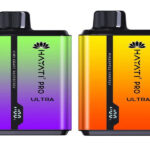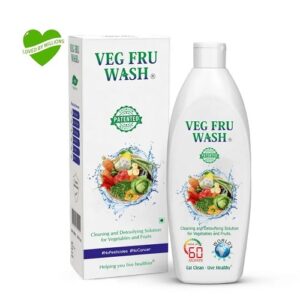Choosing the right insurance plan is crucial for securing your family’s financial future. Two of the most popular options are life insurance and term insurance, each serving different needs. While both provide financial protection, they differ in coverage, benefits, and long-term value.
In this guide, we’ll explore the differences between life insurance and term insurance, their pros and cons, and help you decide which one aligns with your financial goals.
Understanding Life Insurance and Term Insurance
1. What is Life Insurance?
Life insurance (also called whole life or permanent insurance) provides lifelong coverage with a death benefit and a cash value component. It combines protection with an investment element, allowing policyholders to build savings over time.
Key Features of Life Insurance:
-
Lifelong coverage (as long as premiums are paid)
-
Cash value accumulation (part of the premium is invested)
-
Higher premiums compared to term insurance
-
Loans and withdrawals allowed against cash value
-
Guaranteed death benefit for beneficiaries
Types of Life Insurance:
-
Whole Life Insurance – Fixed premiums and guaranteed cash value growth.
-
Universal Life Insurance – Flexible premiums and adjustable death benefits.
-
Variable Life Insurance – Investment-linked cash value (higher risk & reward).
2. What is Term Insurance?
Term insurance is a pure protection plan that provides coverage for a fixed period (10, 20, or 30 years). If the policyholder passes away during the term, the beneficiaries receive the death benefit. However, if the term expires and the policyholder is alive, there is no maturity benefit unless it’s a return-of-premium (ROP) term plan.
Key Features of Term Insurance:
-
Affordable premiums (lower than life insurance)
-
No cash value (only a death benefit)
-
Fixed coverage period (renewable or convertible in some cases)
-
High sum assured at low cost
-
Ideal for financial dependents (young families, loans, etc.)
Types of Term Insurance:
-
Level Term Insurance – Fixed premium and death benefit.
-
Decreasing Term Insurance – Coverage reduces over time (e.g., for mortgages).
-
Return of Premium (ROP) Term – Premiums refunded if the policyholder outlives the term.
Life Insurance vs. Term Insurance: Key Differences
| Factor | Life Insurance | Term Insurance |
|---|---|---|
| Coverage Duration | Lifetime | Fixed term (10-30 years) |
| Premiums | Higher | Lower |
| Cash Value | Yes (investment component) | No (pure protection) |
| Maturity Benefit | Yes (if surrendered or cashed out) | No (unless ROP term plan) |
| Flexibility | Loans/withdrawals possible | No liquidity benefit |
| Best For | Wealth building + lifelong coverage | Temporary, high-coverage needs |
Pros and Cons of Life Insurance
✅ Advantages:
✔ Lifelong security – No expiry as long as premiums are paid.
✔ Cash value growth – Acts as a savings/investment tool.
✔ Borrowing option – Policy loans available in emergencies.
✔ Estate planning – Helps in wealth transfer with tax benefits.
❌ Disadvantages:
✖ Expensive premiums – Costlier than term insurance.
✖ Complexity – Different variants with varying returns.
✖ Lower death benefit per rupee – More premium for the same coverage compared to term.
Pros and Cons of Term Insurance
✅ Advantages:
✔ Affordable – Maximum coverage at minimal cost.
✔ Simple & transparent – No investment complexities.
✔ High sum assured – Ideal for income replacement.
✔ Flexible terms – Can align with financial liabilities (loans, child’s education).
❌ Disadvantages:
✖ No maturity benefit – No payout if the policyholder survives the term.
✖ Temporary coverage – Expires after the term ends.
✖ Renewal costs – Premiums increase upon renewal at an older age.
Which One Should You Choose?
Choose Life Insurance If:
🔹 You want lifelong coverage with an investment component.
🔹 You seek estate planning or wealth transfer.
🔹 You can afford higher premiums for long-term benefits.
Choose Term Insurance If:
🔹 You need high coverage at a low cost (e.g., young earners).
🔹 You have temporary financial responsibilities (mortgage, child’s education).
🔹 You prefer simple, no-frills protection without investment risks.
Latest Trends in Insurance (Google EEAT & GHC Compliance)
Google’s EEAT (Experience, Expertise, Authority, Trustworthiness) and GHC (Google Helpful Content) guidelines emphasize high-quality, user-first content. When choosing insurance:
✔ Expert Advice – Consult financial advisors for personalized plans.
✔ Transparency – Compare policies from IRDAI-approved providers.
✔ Customer Reviews – Check claim settlement ratios (e.g., Zoonse has a 97%+ claim ratio).
Final Verdict: Which One Fits You?
-
Term Insurance = Cost-effective, temporary protection.
-
Life Insurance = Long-term security + wealth growth.
If you need pure protection at a low cost, go for term insurance. If you want lifelong coverage with savings, whole life insurance is better.
For the best insurance solutions tailored to your needs, explore customized plans with Zoonse—where financial security meets smart planning.
- Life Insurance vs. Term Insurance: Which One Fits You? A Guide
- If you need pure protection at a low cost, go for term insurance. If you want lifelong coverage with savings, whole life insurance is better.
- insurnace
Related posts:
 Online Kundali: Generate Free & Accurate Kundali just in Minutes
Online Kundali: Generate Free & Accurate Kundali just in Minutes
 Office Janitorial Services Woodfin, NC: By Clean Environments of Asheville, Inc.
Office Janitorial Services Woodfin, NC: By Clean Environments of Asheville, Inc.
 Syna World: Exploring the Immersive Universe Created by Central Cee
Syna World: Exploring the Immersive Universe Created by Central Cee
 Event Management Market Set to Soar with Tech and Global Support
Event Management Market Set to Soar with Tech and Global Support
 Beyond Clean: Why Dubai Chooses Premium Dry Cleaning for Everyday Elegance
Beyond Clean: Why Dubai Chooses Premium Dry Cleaning for Everyday Elegance
 Personalised Dental and Hair Removal Treatments You Can Trust
Personalised Dental and Hair Removal Treatments You Can Trust
 The Timeless Appeal of Pleated Dress: A Must-Have in Every Woman’s Wardrobe
The Timeless Appeal of Pleated Dress: A Must-Have in Every Woman’s Wardrobe
 Hayati Pro Ultra 15000 Puffs Experience up to 15,000 puffs per device with the Hayati Pro Ultra Disposable Vape.
Hayati Pro Ultra 15000 Puffs Experience up to 15,000 puffs per device with the Hayati Pro Ultra Disposable Vape.








